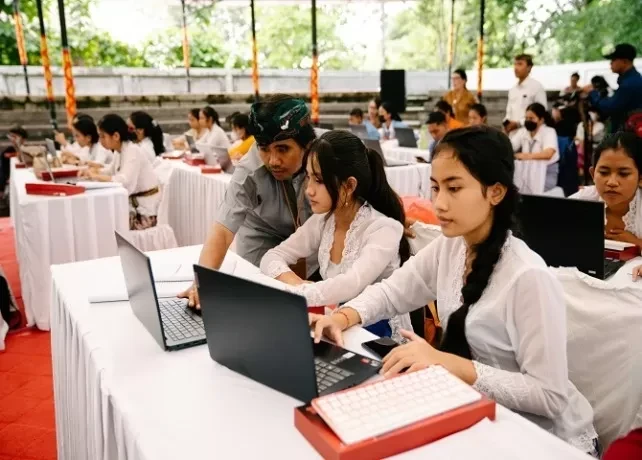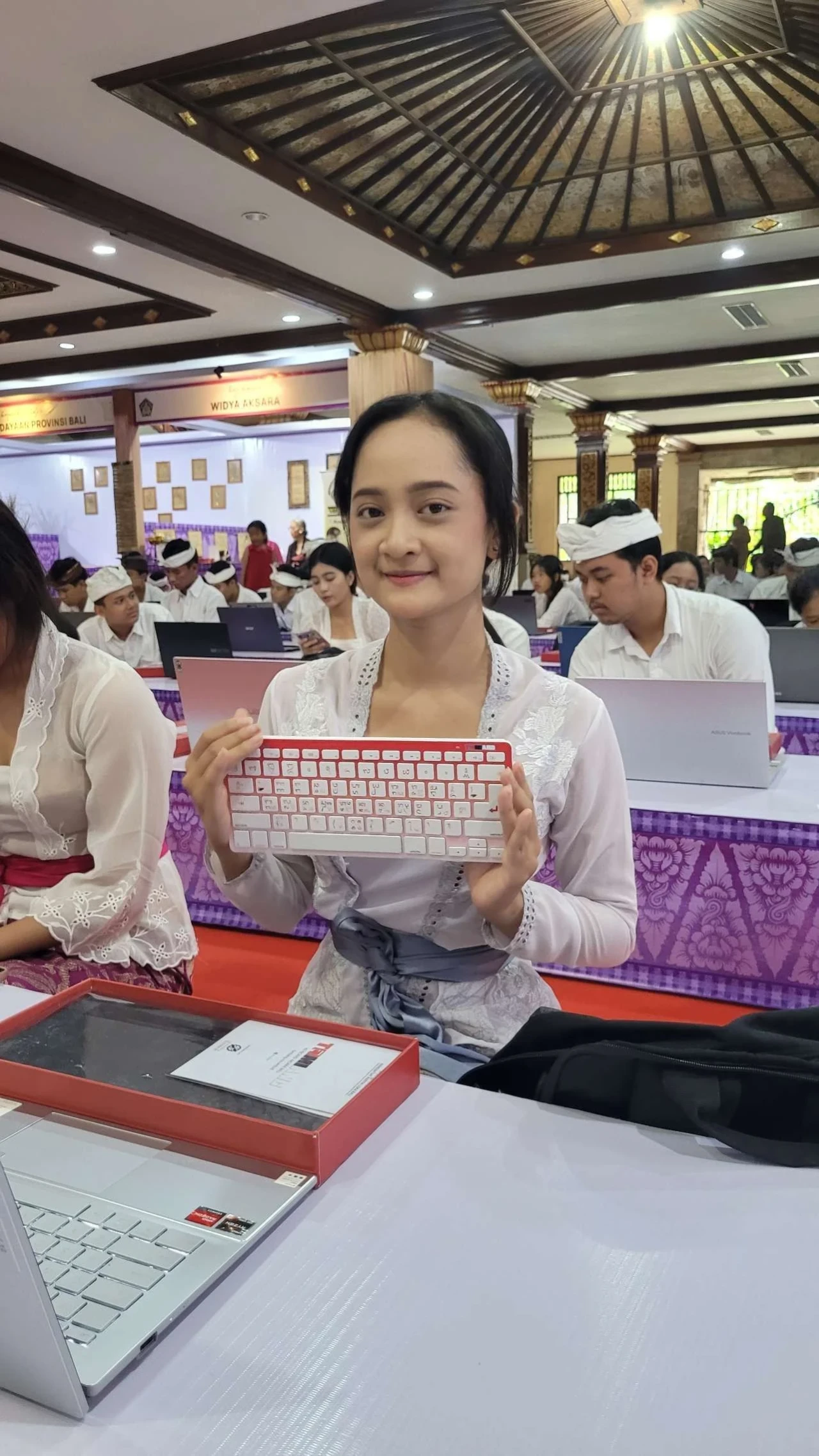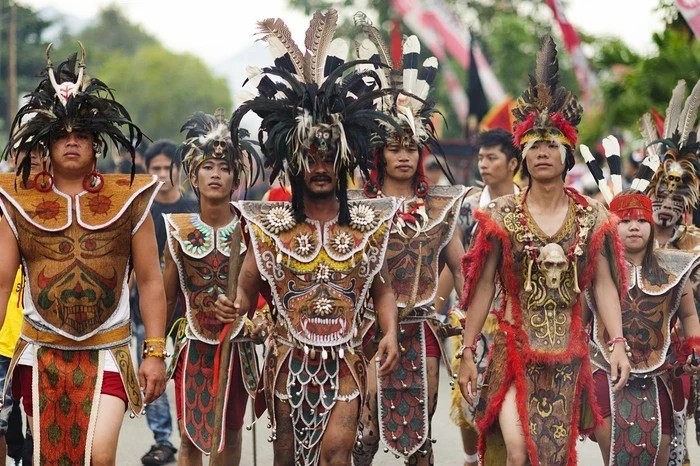
The 7th Annual Balinese Language Month has officially started on the island, carrying the theme “Jagat Kerthi - Jagra Hita Samasta.” This phrase embodies the idea of consciously preserving language, culture, and traditions for the greater good.
The opening ceremony featured traditional Balinese script writing on palm leaves, as well as a demonstration of typing Balinese characters using a specially designed Balinese keyboard layout. The event was attended by hundreds of students from various educational institutions across the island.
One of the students, Ni Putu Andini Sornita Chivitafesia, shared that the Balinese keyboard layout is actively used in the learning process. According to her, teachers encourage students to use this keyboard, making it easier to master Balinese script.

“I started using it back in 9th grade when my school selected me to participate in the launch of the Balinese script keyboard at the Governors Office,” Andini shared.
The use of the Balinese keyboard has now become a common practice in schools. According to Andini, the keyboard is not only used for exercises but also for completing school assignments. She also mentioned that the keyboards provided by the school easily connect to students devices, making the learning process more convenient.
Although Indonesian primarily uses the Latin alphabet, traditional Balinese script is composed of unique characters derived from the ancient Brahmi script of India. The Balinese alphabet consists of 18 consonants, 9 vowels, and numerous diacritical marks that alter pronunciation.
The earliest written records of the Balinese language date back to the 9th–10th centuries, when inscriptions on stones and copper plates first appeared. Today, Balinese script can still be seen on government signs, hotels, and shopfronts, as well as in temples and traditional texts. However, in daily life, most Balinese people have adopted the Latin alphabet.
The Balinese language is not just a means of communication; it is deeply tied to the islands culture, religion, arts, and traditions. This is why efforts to preserve and promote its use continue. While Indonesian and even English are widely spoken in Bali, the Balinese language is not disappearing instead, it continues to evolve and thrive.
Want to impress the locals and connect with Balinese culture? Try using a few Balinese phrases in conversation:
Thank you very much – Matur suksma
You’re welcome – Suksma mawali
How are you? – Kenken kabare?
Traditional greeting (May God bless you) Om Swastiastu
My name is – Ngaran tiang


You can add one right now!